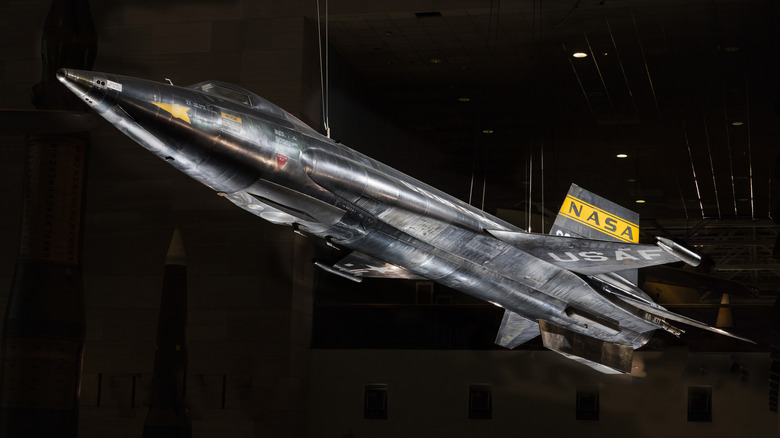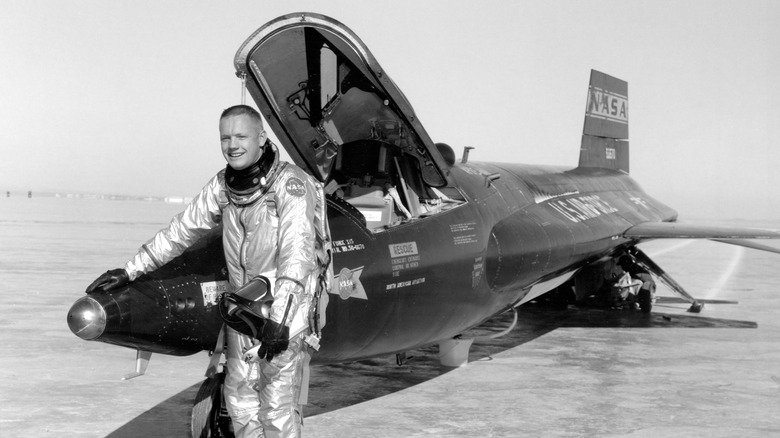The Incredible Features Of The X-15, A Supersonic Research Aircraft And Spaceplane
In 1962, then-President John F. Kennedy gave his famous Moon speech, saying, "We choose to go to the Moon in this decade and do the other things, not because they are easy, but because they are hard." Listeners then likely didn't realize just how much progress had been made toward accomplishing that task. Much like we must learn to ride a bicycle before jumping onto a motorcycle, man needed to know something about outer space before leaping into it. A big part of that knowledge came from the X-15 hypersonic rocket-powered research aircraft.
According to NASA, the joint research program was run by the U.S. Air Force, Navy, and North American Aviation, Inc. It began in December 1954, and led to the design and building of three X-15 aircraft. These hypersonic planes would, for the very first time, test the consequences of hypersonic and zero-gravity flight on not only the pilots' physiology, but the aircraft themselves, including effects on aerodynamics, performance, structural integrity, and stability as they enter and exit the atmosphere.
To infinity and beyond
The first unpowered test flight took place on June 8, 1959, with the first powered flight occurring a few months later, on September 17, 1959, according to Boeing records. The three X-15s were fitted with throttleable XLR-99 engines with a minimum thrust of 28,000 pounds and a max of 57,000, NASA notes.
The plane was a "gas" guzzler — the "gas" being anhydrous ammonia and liquid oxygen burning 18,000 pounds of the stuff in just 85 seconds, per Boeing. As such, it was dropped from another plane to avoid the costly fuel expenditure, typically a B-52 at an altitude of some 45,000 feet that was going over 500 miles per hour. While in the atmosphere, the plane used normal controls, but above the atmosphere, it used a "reaction control system" with thruster rockets on the nose and wings firing hydrogen peroxide to "fly" it in zero gravity, according to NASA. The plane's skin was made with "Inconel X" — a nickel-chrome alloy — while the separate cabin compartment was comprised of aluminum.
Man's first foray into space
It was the first plane to reach the 100,000-foot mark and fly at hypersonic speeds beyond Mach 4, 5, and 6. It eventually hit an altitude of 354,200 feet and reached a speed of Mach 6.7. That's 4,520 mph, according to NASA. It held that record until the Space Shuttle went Mach 22 as it reentered the atmosphere in April 1981, Boeing notes.
By the end of an illustrious 10-year career, the three X-15s, were flown by twelve test pilots, including Neil Armstrong, who would become the first man to step foot on the moon. Nine of the 12 pilots who flew the X-15s went above the 50-mile (260,000 feet) threshold, earning them their astronaut wings. And their 199 flights provided invaluable data that shaped the development and creation of America's space program, proving that man could in fact do the "hard things" by building machines that would get us to the moon and beyond.

